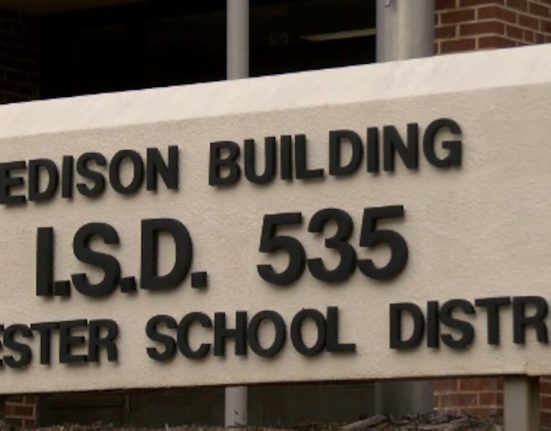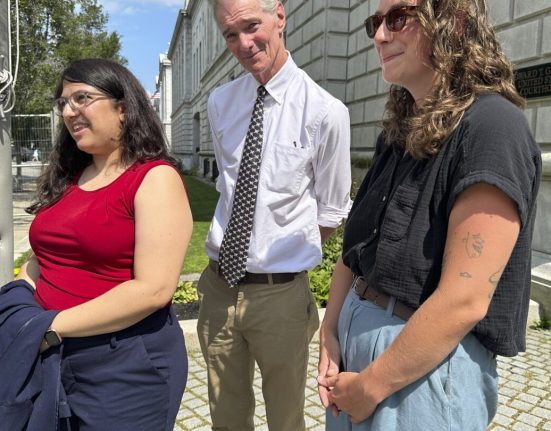
Linda McMahon says Dept. of Education can only be closed by Congress
President Donald Trump’s nominee for education secretary faced questions about federal funding for low-income schools, school choice and more.
As President Donald Trump slashes federal programs nationwide, funding for public school districts across Wisconsin is in jeopardy.
Some Wisconsin school districts rely on federal dollars for nearly a quarter of their annual revenue, according to recently published data from the state’s Department of Public Instruction. The funding comes from both the U.S. Departments of Education and Agriculture, and fuels everything from school meal programs to full-time educator positions.
Across the state, federal education funding cuts jeopardize $842 million in federal funds, equivalent to 8% of school funding in Wisconsin and equating to over 6,100 educator jobs, according to DPI data.
The Sheboygan Area School District, one of the 10 largest in the state, receives over $10.8 million. Those funds account for about 9% of the district’s total revenue and support 68 educators.
Why do some districts rely on more federal money than others? A significant portion of federal education funding also supports districts with higher proportions of economically disadvantaged families, according to the DPI.
Here’s which Wisconsin school districts rely the most on federal funding — and stand to lose the most from Trump’s latest cuts:
How is the Trump administration slashing federal funds for public schools?
USDE cuts have been a centerpiece of the Trump administration’s widespread crackdown on federal spending.
Within the last several weeks, the administration has signed an executive order to dismantle the department, halved its workforce and sent several letters to every school district nationwide threatening to cut federal funding if schools don’t eliminate diversity initiatives and allow parents to view students “gender identity” records.
Which Wisconsin school districts rely the most on federal funding?
Federal funding makes up more than 15% of total revenue for nine school districts across Wisconsin, according to DPI.
To compile the data, the department added up USDE allocations for fiscal year 2025 with USDA expenditure reimbursements for fiscal year 2024. It also estimated how many full-time educators are supported by USDE funding in each district, based on revenue caps for each district and average statewide salaries.
Here’s which districts rely the most on federal funding:
Here’s a further breakdown of how much each district receives, including how much of total revenue the funds make up and how many full-time educators they support:
| School District | Total federal funds | Percent of total revenue | Number of full-time educators supported by USDE funding |
| Granton Area School District | $756,304 | 25% | 6 |
| Menominee Indian School District | $3,365,653 | 24% | 30 |
| La Farge School District | $810,044 | 23% | 7 |
| Milwaukee School District | $194,781,223 | 20% | 1,640 |
| Hillsboro School District | $1,096,096 | 18% | 10 |
| Winter School District | $571,110 | 18% | 4 |
| Norwalk-Ontario-Wilton School District | $1,217,649 | 17% | 8 |
| Athens School District | $1,186,091 | 17% | 11 |
| Cashton School District | $1,041,673 | 16% | 9 |
How much federal funding do the 10 largest Wisconsin school districts receive?
The largest districts were determined using unaudited DPI 2023-24 data.
Here’s a further breakdown of how much each district receives, including how much of total revenue the funds make up and how many full-time educators they support:
| School District | Total federal funds | Percent of total revenue | Number of full-time educators supported by USDE funding |
| Milwaukee School District | $194,781,223 | 20% | 1,640 |
| Racine Unified School District | $28,630,989 | 10% | 216 |
| Green Bay Area School District | $26,298,083 | 10% | 178 |
| Madison Metropolitan School District | $26,054,118 | 6% | 215 |
| Kenosha School District | $19,793,646 | 9% | 140 |
| Appleton Area School District | $13,681,355 | 8% | 103 |
| Sheboygan Area School District | $10,810,549 | 9% | 68 |
| Janesville School District | $10,757,267 | 9% | 68 |
| Eau Claire Area School District | $8,550,879 | 6% | 63 |
| Waukesha School District | $8,103,884 | 6% | 59 |
School districts that rely most on federal funds have more families in poverty
The largest portion of federal education funding is directed towards supporting schools struggling at the bottom of the achievement and resource gaps, DPI’s Interim Communications Director Chris Bucher said.
School district’s across the nation with higher populations of economically disadvantaged families and students receive federal funding through the Title 1 formula part of the 2015 Every Student Succeeds Act.
As a result, school districts that are already struggling will be the hardest hit by the Trump administration’s cuts, Bucher said.
For example, across Wisconsin, Milwaukee Public Schools receives the highest percentage of its funding from the federal government. More than 80% of its students, around 55,000 kids, are from economically disadvantaged families, according to Milwaukee Public School data.
What else do school districts use federal funding for?
Though public school districts are funded primarily through state aid and local taxpayer dollars, federal dollars help fuel a wide range of special programs.
In Wisconsin, federal funds support students with disabilities, low-income students, youth mental health programs, English language learning programs and school meal access, among other programs, according to DPI.
Additionally, USDE issues a variety of grants to help place new and experienced teachers in schools.
Alec Johnson contributed to this report.






